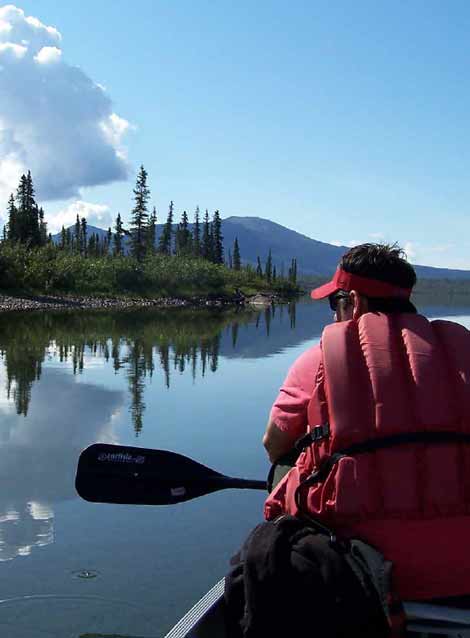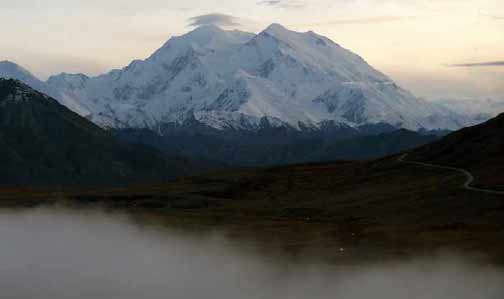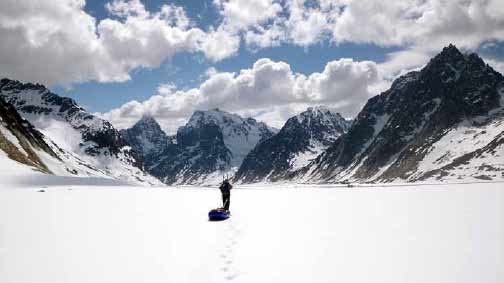Learn why wilderness is good for Alaska!

Robert Winfree
Wilderness is good for Alaska. That’s what many of we Alaskans already think, and it’s the message that the Wild 50 groups in Anchorage, Fairbanks, and Juneau hope to spread across the state during 2014, the fiftieth anniversary of the 1964 Wilderness Act. Comprised of federal agencies, nonprofit organizations, Native representatives, academic institutions, youth, tourism sectors, and volunteers, Wild 50 is planning commemorative events across the state to celebrate this important anniversary.
We have a lot to be excited about. Alaska wilderness serves as a unique scientific laboratory. It has been the engine for fifty years of tourism growth in Alaska. It includes landscapes that inspire countless works of art. It is a playground for hardy adventurers, a touchstone to the past, and a link to cultural identity. It conjures a sense of freedom and self-reliance that is getting harder to come by in our technology-centric world. Wilderness areas around the country contain similar attributes, but Alaska wilderness is the epitome of our National Wilderness Preservation System (NWPS) and remains an iconic symbol of wildness and freedom worldwide.
Alaska wilderness is unique and there is a lot of it. About 95 percent of National Park Service (NPS) land in Alaska falls under some category of wilderness protection—about 30 percent of the nation’s wilderness. Including areas managed by the U.S. Fish and Wildlife Service and U.S. Forest Service, we’re collectively talking about more than 57 million acres of designated wilderness in Alaska: watersheds, mountain ranges, glaciers, wetlands, coastlines, volcanoes, and forests that support diverse wildlife populations, protect archeological resources, provide a setting for wilderness recreation, and support the continuation of a subsistence lifestyle for local communities.
The Alaska National Interest Lands Conservation Act (ANILCA) ensures that wilderness in Alaska is unique within the NWPS by making unprecedented allowances for access and activities not normally found in Lower 48 wilderness areas. Prior to passage of ANILCA, people all over Alaska were involved in widely dispersed activities like backcountry recreation, cabin building, hunting, fishing, trapping, and small-scale mining—often in very remote and primitive settings. Their methods of transportation varied widely, from foot travel and dog sleds to snowmachines, motorboats, and airplanes. To satisfy the demand for protection of the wildlands of Alaska, Congress realized that some special exceptions would be necessary to preserve traditional activities and accommodate transportation needs between remote communities. When finally passed in 1980, ANILCA reserved federal lands on an unprecedented scale while also including similarly unprecedented special provisions to address Alaska’s distinctive rural way of life and lack of infrastructure. ANILCA tried to make wilderness a good thing for everyone.
Unfortunately, not everyone saw it that way. Wilderness faced threats from adjacent resource development, and many Alaskans were fearful that land management would constrain local lifestyles and diminish potential for economic growth. Many heated debates transpired about how to make decisions that were best for our wilderness resources, Alaskans, and the American public.
Land managers confronted numerous challenges internally. They had to learn what this new ANILCA wilderness was all about and communicate that information to their own staff and to the public. They had to make sure wilderness had a seat at the table and that their colleagues were willing and able to integrate wilderness values into decision-making processes. They also had the difficult job of making park managers and field staff aware of their roles and responsibilities in managing wilderness lands; that often meant taking more time to make decisions and doing work differently than how they had done it in the past.
Wilderness stewardship in Alaska has come a long way. Proponents of resource development are now tempered by a broad spectrum of Alaskans who appreciate the benefits of wilderness. These often include conservation organizations, hunters, trappers, birders, Native groups, commercial fishing interests, photographers, outdoor sport enthusiasts, armchair adventurers, tourism organizations, and small businesses.

Robert Winfree
Agency personnel who steward Alaska wilderness areas are armed with a clearer understanding of the Wilderness Act’s mandate to preserve wilderness character, and the 2014 Keeping it Wild in the National Park Service: User Guide to Integrating Wilderness Character into Park Planning, Management, and Monitoring provides land managers with practical strategies and tools to do just that. Now that we are able to define wilderness character in terms that are tangible and that directly link agency stewardship to the requirements of wilderness legislation and agency policy, we are able to make more objective and defensible decisions.
Land managers in Alaska benefit from wilderness training and wilderness research that is supported by the Arthur Carhart National Wilderness Training Center and the Aldo Leopold Wilderness Research Institute. Over the last fifty years, wilderness scientists, historians, legal scholars, philosophers, and writers have given us a much better understanding of the concept of wilderness, the legal mandate for managing wilderness, and the natural and cultural resources that occur within wilderness in the Alaska national parks. This new understanding and these new tools have allowed us to improve stewardship of the wilderness.
Specifically, the NPS Alaska Region now has a process in place for evaluating impacts to wilderness character in National Environmental Policy Act documents. Alaska parks use a science in wilderness evaluation framework to evaluate the benefits and impacts of proposed research projects, park staff are equipped with a better understanding of their responsibilities for preserving wilderness character, and most Alaska parks have updated maps of wilderness boundaries. These big accomplishments allow us to more adeptly steward these special places and embrace our wilderness heritage.
We continue to confront new challenges. Surely, there will continue to be pressure around the borders of wilderness areas as Alaska’s population increases, and large scale mining and other resource development sectors advocate for expanded industrial activity, infrastructure, and transportation systems. Under such scenarios, public support will be critical to “hold the line” for preserving wilderness lands and waters. There are other threats too though, including some more insidious. As the 2012 Revisiting Leopold report points out, “Environmental changes confronting the National Park System are widespread, complex, accelerating, and volatile.” It goes on to list a few of them: biodiversity loss, climate change, habitat fragmentation, invasive species, air, noise, and light pollution. These threats will tear at the fabric of the natural quality of our wilderness areas and test our will to embrace restraint and humility, central tenets of wilderness stewardship.

NPS Photo / Adrienne Lindholm
It will no doubt be a challenge to preserve the freedom that Alaska wilderness embodies. Freedom of the land to continue to change according to its own free will, freedom of natural processes to play out without humans intervening—directly or indirectly. The challenge for land managers will be to make the hard choices between intervening in order to perpetuate a species or landscape, and keeping our hands off in order to preserve a sense of wildness.
David Gessner writes about freedom in another sense: the liberating feeling of leaving society and technology behind. He writes that one of the best arguments for wilderness is one that connects “freedom from feeling like we’re all under constant surveillance with the freedom to go to the natural world as a refuge—as a place apart.” He goes on to say that, “This isn’t the jingoistic ‘freedom’ that pundit politicians [prattle] . . . on about, but rather something much closer to the real, productive, pioneering freedom that—in this country, at least—has always been tied to our most fundamental ideals: independent thought, nonconformity, and the exploration of new frontiers.” This sense of freedom will continue to get more difficult to find. In an era rich in technology, short on time, and characterized by instant information and instant gratification, wilderness faces a challenge with technology like never before: technology that is accessible just about everywhere. At risk is the feeling of freedom a person has when they enter the Alaskan wilderness, knowing they can leave the whir of civilization and technology behind.
It will be up to Generations X, Y, and Z to confront these challenges and preserve wilderness character. Will young people love wilderness and want to protect it? Will wilderness be relevant to younger generations without compromising wilderness ideals?
Wild 50 believes it will be. We believe wilderness will continue to be an enduring and ever more important resource for Alaska and the American people as areas outside wilderness begin to look and feel more and more different from the ways they once were. Throughout 2014 we will celebrate Alaska’s wilderness as unique and irreplaceable. Wild 50 hopes you will join us in keeping Alaska wild forever, celebrating wilderness as an important part of Alaska’s future, and recognizing wilderness as our gift to countless future generations.
References
- Alaska Wild 50 on Facebook
- The national Wilderness 50 website
- Gessner, D. 2013.
Could Drones Mean the End of Wilderness? Huffington Post, May 19, 2013. - National Park System Advisory Board Science Committee. 2012.
Revisiting Leopold: Resource Stewardship in the National Parks.
Part of a series of articles titled Alaska Park Science - Volume 13 Issue 1: Wilderness in Alaska.
Last updated: February 3, 2015
